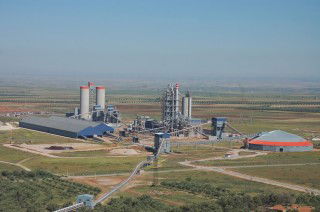As the slowdown in India’s key housing sector largely persists, hopes are on the government’s infrastructure plans to bolster domestic cement consumption and narrow the gap between demand and production capacity. While domestic cement producers may be able to seize the opportunity to export in some of India’s neighbouring countries, these nations’ drive to self-sufficiency is expected to affect export success.
India’s economic growth hit a three-year low during the April-June quarter of 2017 with GDP expanding by just 5.7 per cent, the lowest since Prime Minister Narendra Modi took charge in May 2014 (see Tables 1 and 2).
With private investment less than lukewarm, the economy is kept afloat on the back of government expenditure. The government’s demonetisation initiative in November 2016 caused an acute cash shortage with severe consequences for many small and medium-sized businesses, which fell into debt and were forced to lay off millions of workers. The destocking by companies due to the goods and services tax (GST) added further woes. As a result, India lagged China in GDP growth for the second-consecutive quarter as the Chinese economy expanded by 6.9 per cent in both quarters.
